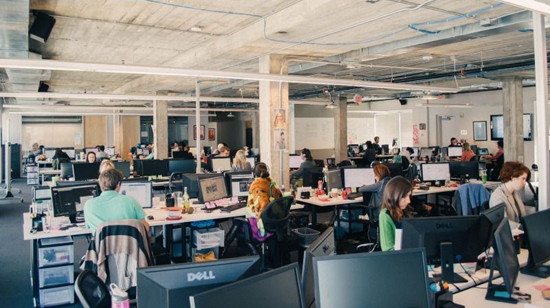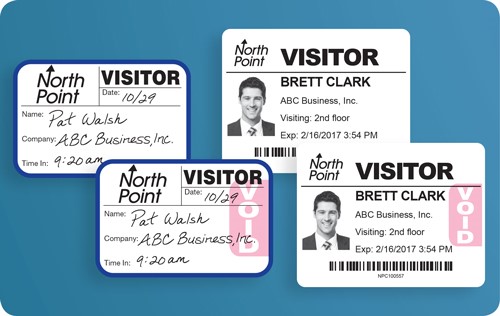Blog
The security risks of an open office layout
by Paul Kazlauskas

Open office plans are designed to be collaborative, inviting spaces to work in. These open work spaces, typically for ten or more people, are suitable for activities which demand frequent communication or for routine activities which need relatively little concentration. These office layouts are en vogue for some large corporations, especially the tech industry. Many times, employees don’t have an assigned desk or a lockable file cabinet. Combined with the use of laptops, open office layouts emphasize work can be done anywhere. While these layouts allow for flexibility, they also create some risks when it comes to security.
If an employee doesn’t have an office, they can’t just close and lock their door when done for the day. If they don’t have an assigned desk, odds are they don’t have a file cabinet where they can lock up their belongings. Proponents of the open office plan say that visible security measures undermine the whole point of the layout. But what are employees supposed to do with their stuff? Items like laptops, jackets, purses, and backpacks can’t be locked away. If a thief gains entry to the office and looks the part of your average employee, what is stopping them from taking a few items and leaving undetected?
In high-rise office buildings, there are additional security precautions that can be taken. Access control measures such as requiring an employee I.D. to use the elevator or open a front door help limit where people can go. However, any security planning and equipment is for not if “tailgaters” get their way. “Tailgaiters” refers to people who hang around the entrance to restricted areas and wait for someone to hold the door open for them. It is a common practice in our society to hold the door open for people behind you. However, once access has been gained, there is little in the way of security features on the open office layout that will stop a thief from getting away after stealing some property.
In addition to theft of employee belongs, open office layouts present the possibility of stealing sensitive or confidential information for unauthorized use. With employees changing workstations regularly, it is easy for other employees, vendors, or contractors to capture confidential information. Through the use of smartphone cameras (to take a quick photo) or thumb drives (to quickly save a document), people with ill intentions can visually hack a laptop. Workers need to be trained to be aware of their surroundings and angle laptops away from high traffic areas. In addition, laptops should be shut down and password protected when not in use.
In an effort to make facilities as secure as they can be, company policies and procedures should dictate what information can be accessed where and when. Employees need to be trained effectively when they start employment and have regular refresher sessions. Communication should be encouraged and proper accordance with the rules should be rewarded. The larger the company, the greater the chance employees will find themselves working alongside different individuals on a daily basis. Physical security and data security need to be complete to mitigate the possible security risks of the open office environment.
Want the latest, best security practices delivered straight to your inbox? Enter your email address in the "Subscribe" area (on the left side navigation).
Our visitor badges “VOID” overnight to prevent reuse. 
See them for yourself — request free samples!
Follow us on Social Media for more security content.![]()
![]()
![]()
Posted on 10/2/2015



 Paul Kazlauskas
Paul Kazlauskas
 Andrew Jones
Andrew Jones